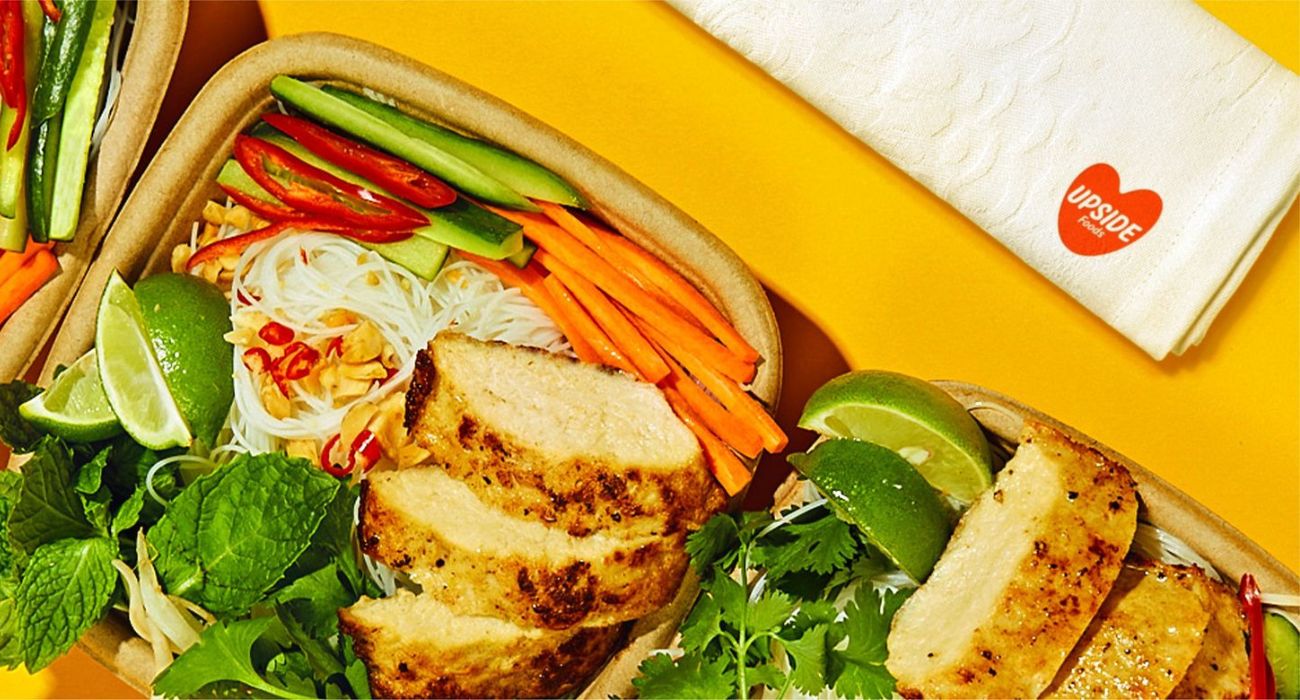Californian companies UPSIDE Foods and GOOD Meat were granted approval by federal regulators Wednesday to produce and sell cultivated chicken meat to U.S. consumers.
A press release on June 21 from UPSIDE Foods celebrated its product’s successful completion of the Agriculture Department’s pre-market regulatory review process as historic.
“It’s a giant step forward towards a more sustainable future — one that preserves choice and life. We are excited to launch with our signature, whole-textured UPSIDE chicken and can’t wait for consumers to taste the future,” the company said in the release.
Along with GOOD Meat, a subsidiary of Eat Just Inc., UPSIDE Foods grows its chicken meat product in labs from animal cells. Known as cultivated meat, the batches are formed into the familiar shapes of cutlets, nuggets, or sausages before consumption.
While perhaps similar to products from Beyond Meat and Impossible Burger in their attempt to provide an alternative to traditionally sourced meat, cultivated chicken is still an animal meat product and thus is not meant for vegetarians or vegans.
As The Dallas Express previously reported, offerings from Beyond Meat and Impossible Burger are made from plant proteins and, while touted as offering a more sustainable product than cattle farming, this claim has been subject to some controversy due to their reliance on monocultures.
While lab-grown meat has only now been greenlit for U.S. consumers, GOOD Meat has been selling its cultivated chicken meat in Singapore since 2020. According to its press release, GOOD Meat’s product is widely available to local consumers, whether at fine dining establishments or hawker stalls.
Yet in the U.S., cultivated chicken will have a relatively slow rollout limited at first to two restaurants: Bar Crenn in San Francisco and another yet to be disclosed in Washington D.C.
This is largely due to the high cost involved in fabricating cultivated meat and it not yet being scalable to large batch production, explained Ricardo San Martin, director of the University of California’s Alt: Meat Lab, according to AP News.
As UPSIDE Foods’ Chief Operating Officer Amy Chen told The Dallas Express last November when the firm completed its first pre-market consultation with the Agricultural Department, the first step in making its product is the extraction of cells from a live animal.
Next, the cells are placed in tanks and fed salts, minerals, and carbohydrates so they can grow muscle fibers, fat, and connective tissue. After a while, the cells expand and then can be shaped into molds to appear as different cuts.
While paler in appearance, Chen told AP News that people who have tried the cultivated chicken breast prepared by chef Jess Weaver at the UPSIDE Foods’ facility most often say, “Oh, it tastes like chicken.”
In terms of nutrition, UPSIDE Foods’ senior communications associate Brooke Whitney explained that the company was aiming to make the nutrition profile of its products better than conventional meat, according to Very Well Health.
In the case of cultivated chicken meat, it “has fewer calories and lower fat than an average piece of conventionally-produced chicken,” Whitney said.
Unhealthy diets heavy in ultra-processed foods have contributed to an obesity crisis in the U.S., as The Dallas Express has extensively covered.
As UPSIDE Foods and GOOD Meat prepare to put cultivated chicken on fine diners’ plates in the U.S., there are over 150 companies worldwide endeavoring to produce lab-grown versions of a variety of meats, including chicken, pork, lamb, and beef.
Last month, as The Dallas Express reported, an Israeli food-tech company called Steakholder Foods developed a 3D-printed fish fillet that its CEO Arik Kaufman said tasted exactly like the real thing.
Partnering with Singapore-based Umami Meats, Steakholder Foods hopes to have its cultivated fish product approved for Singaporean consumers sometime next year.






